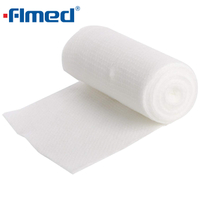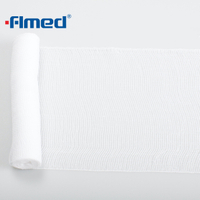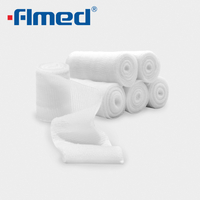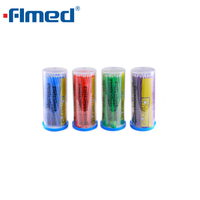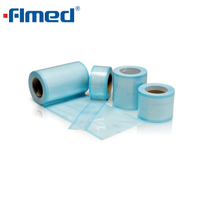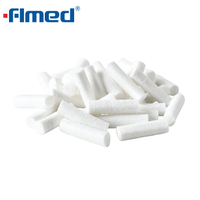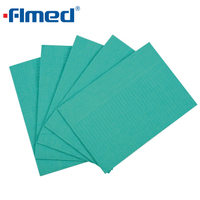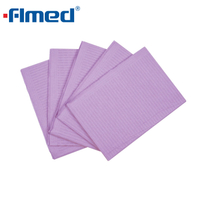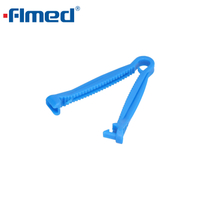Sprains and strains are common injuries that can be quite painful and debilitating. One effective way to provide support and promote healing for these injuries is by using a crepe bandage. In this article, we will explore the benefits of using a crepe bandage for sprains and strains, as well as provide tips on how to use it effectively. Additionally, we will discuss important safety precautions to ensure that you can use a crepe bandage safely. Whether you're an athlete, a fitness enthusiast, or simply someone who wants to be prepared for unexpected injuries, understanding how to effectively use a crepe bandage can make a significant difference in your recovery process. So, let's dive in and discover the proper techniques for using a crepe bandage to alleviate pain and promote healing in sprains and strains.
Benefits of Using Crepe Bandage for Sprains and Strains
Sprains and strains are common injuries that can occur during physical activities or accidents. These injuries can cause pain, swelling, and instability in the affected area. To aid in the recovery process, many healthcare professionals recommend the use of a crepe bandage.
Crepe bandages are elastic bandages made from a lightweight and breathable material. They are designed to provide support and compression to injured muscles, ligaments, and joints. One of the key benefits of using a crepe bandage is its ability to reduce swelling. When applied correctly, the bandage can help minimize the accumulation of fluid in the injured area, thereby reducing inflammation and pain.
Furthermore, crepe bandages are effective in immobilizing the injured area. Immobilization is crucial for proper healing as it prevents further damage and allows the body to repair itself. By immobilizing the affected joint or muscle, the bandage helps to stabilize it and promote the healing process.
Another advantage of using a crepe bandage is its versatility. These bandages can be used for a wide range of injuries, including sprains, strains, and even fractures. Whether it's a twisted ankle, a strained wrist, or a sprained knee, a crepe bandage can provide the necessary support and compression to aid in the recovery process.
In addition to its physical benefits, crepe bandages also offer psychological support. The compression provided by the bandage can create a sense of security and stability for the person wearing it. This reassurance can help alleviate anxiety and promote a positive mindset during the healing journey.
When using a crepe bandage, it is important to follow proper application techniques. The bandage should be wrapped snugly but not too tightly, as excessive pressure can hinder blood flow. It is also crucial to seek medical advice for severe sprains or strains that may require additional treatment.
How to Use Crepe Bandage Effectively
Crepe bandages are a versatile and essential tool in any first aid kit. These elastic bandages are commonly used to provide support and compression to injured or weak joints and muscles. However, in order to effectively use a crepe bandage, it is important to follow certain guidelines.
First and foremost, it is crucial to select the right size of crepe bandage for the specific injury or body part that needs support. Crepe bandages come in various widths and lengths, and choosing the appropriate size ensures optimal compression and comfort. It is recommended to consult a healthcare professional or pharmacist to determine the correct size for your needs.
Once you have the right size, it is important to apply the crepe bandage correctly. Begin by gently cleaning and drying the injured area to prevent any infections. Start wrapping the bandage from the farthest point from the heart, gradually moving towards the heart. This promotes proper blood circulation and prevents swelling. Make sure to maintain even tension while wrapping to ensure effective compression.
When wrapping the crepe bandage, it is important to overlap each layer by around half of the previous layer. This helps to provide consistent compression and support. However, be cautious not to wrap too tightly, as this can restrict blood flow and cause discomfort. The bandage should be snug, but still allow for comfortable movement.
In addition to proper wrapping technique, it is important to know when and how long to wear a crepe bandage. Crepe bandages are commonly used for acute injuries, such as sprains and strains, as well as chronic conditions like arthritis. It is recommended to wear the bandage during activities that may strain the injured area or exacerbate the condition. However, it is important to remove the bandage while resting or sleeping to allow the skin to breathe and prevent any potential complications.
Lastly, it is essential to regularly check the condition of the crepe bandage and replace it when necessary. Over time, the elasticity and effectiveness of the bandage may deteriorate, reducing its ability to provide proper support. If the bandage becomes loose, stretched, or shows signs of wear and tear, it is time to replace it with a new one.
Tips for Using Crepe Bandage Safely
Crepe bandage is a commonly used medical aid that is designed to provide support and compression to injured limbs. It is important to use crepe bandage safely and effectively to ensure proper healing and prevent further damage. Here are some tips to help you use crepe bandage safely.
Firstly, it is crucial to choose the right size of crepe bandage for the specific body part that needs support. A bandage that is too tight can restrict blood flow, while a loose one may not provide enough compression. Measure the circumference of the affected area and select a bandage that matches the measurement.
Before applying the crepe bandage, it is important to clean and dry the area thoroughly. This helps to prevent infections and promotes better adhesion of the bandage. Make sure to remove any dirt, debris, or previous bandage residue from the skin.
When wrapping the crepe bandage, start from the farthest point of the limb and work towards the body. This ensures that the bandage stays secure and does not unravel. It is important to wrap the bandage evenly, neither too tight nor too loose. Keep an eye on the color of the skin around the bandage. If it turns blue or pale, it indicates that the bandage is too tight and should be loosened immediately.
To provide additional support and stability, it is recommended to use a figure-eight wrapping technique for joints such as the ankle or wrist. This helps to immobilize the joint and prevent further injury. However, make sure not to wrap the bandage too tightly around the joint, as it can restrict movement and cause discomfort.
It is important to regularly check the crepe bandage for any signs of loosening or slipping. If the bandage becomes loose, reapply it to ensure proper compression. Additionally, it is advisable to remove the bandage before sleeping to allow the skin to breathe and prevent any circulation issues.
Lastly, it is essential to follow the recommended duration for wearing the crepe bandage. Overusing the bandage can weaken the muscles and lead to dependency. Consult with a healthcare professional to determine the appropriate length of time for wearing the bandage based on the nature and severity of the injury.
Conclusion
The article discusses the benefits and proper use of crepe bandages for sprains and strains. It highlights that crepe bandages are effective in reducing swelling, providing support, promoting healing, and offering psychological comfort during the recovery process. The article emphasizes the importance of selecting the right size, applying the bandage correctly, and knowing when to wear and replace it for optimal support and compression. It also advises consulting a healthcare professional for personalized advice. The safe and efficient use of crepe bandages is emphasized, including choosing the right size, cleaning the area, wrapping evenly, and regularly checking for proper compression. Overall, crepe bandages are shown to aid in the speedy and efficient healing of injuries, allowing individuals to resume their daily activities with minimal discomfort.

 English
English
